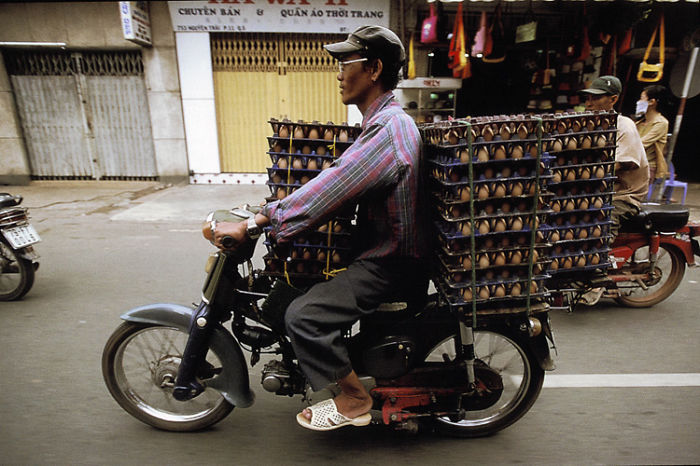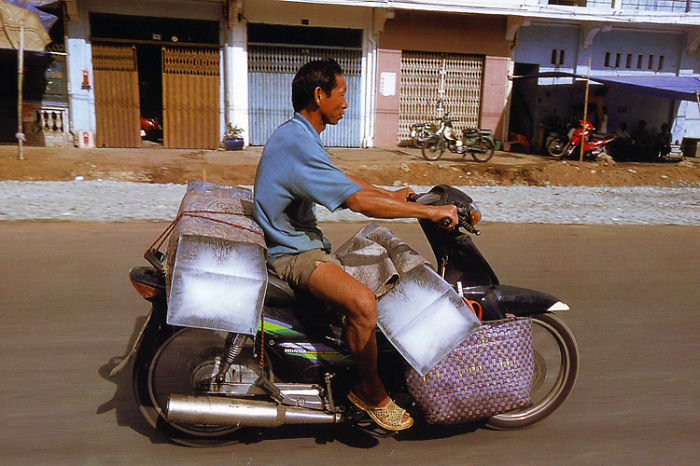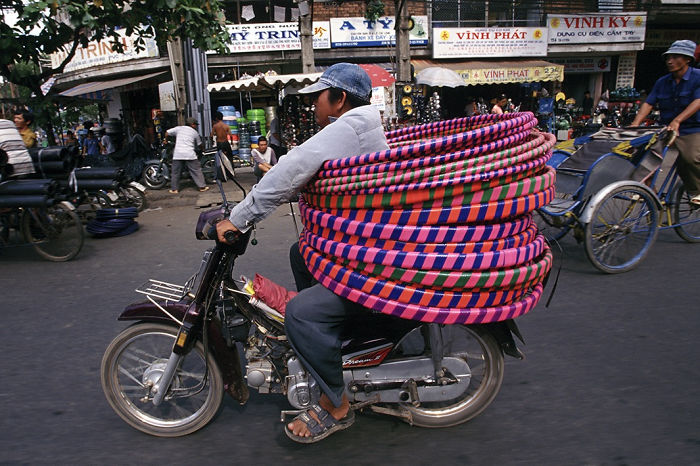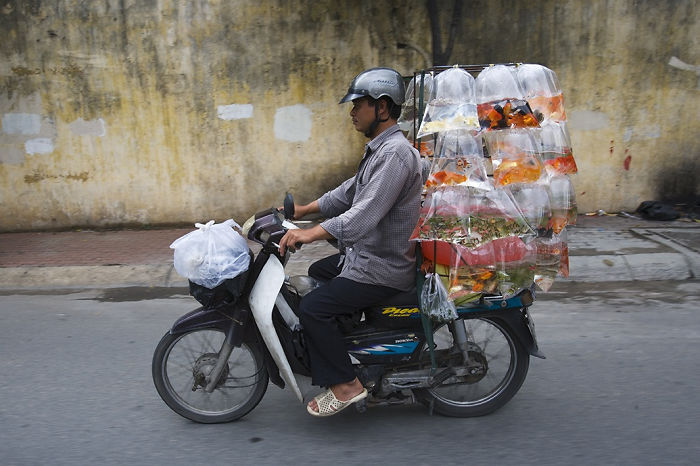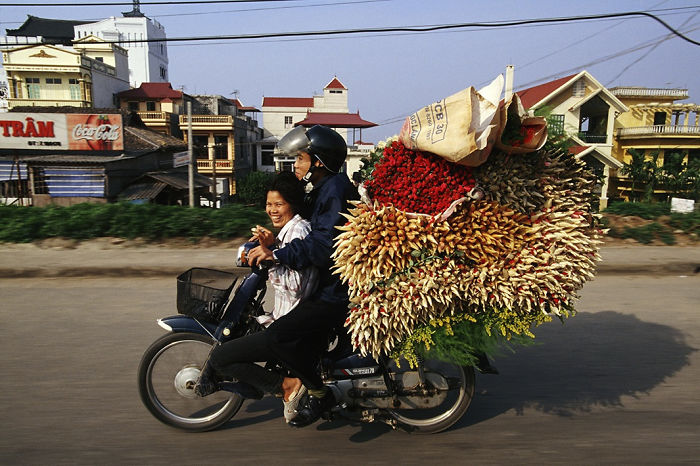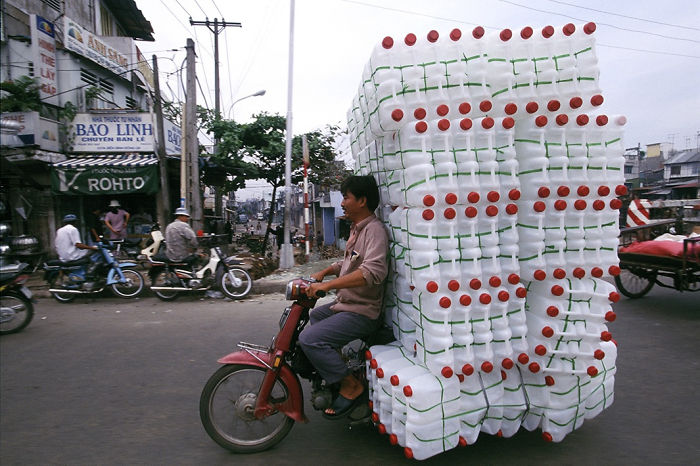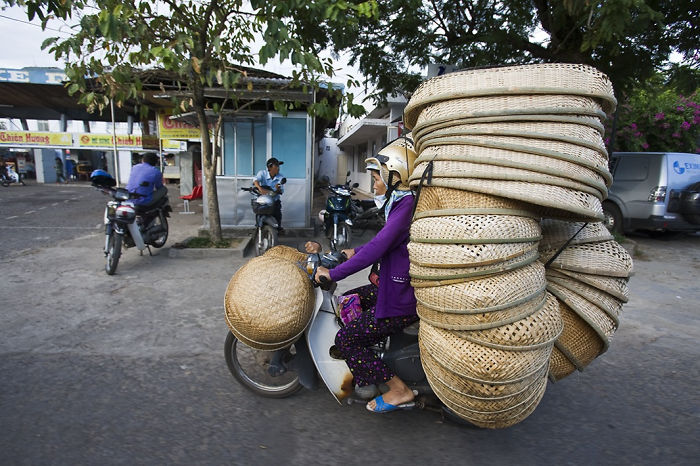[Photography] An interview with: Hans Kemp
- Aug 13, 2021
- 11 min read
Updated: Aug 16, 2022
Psychic Garden are delighted to present an in-depth interview with the immensely talented Hans Kemp, an award winning Dutch photographer who has been based in Asia for 30 years.
Hans Kemp has published 7 coffee-table books of his work. His latest book, Divine Encounters - Sacred Rituals and Ceremonies in Asia, was published in 2019. The Nikkei Asian Review calls it “A monumental work in every way”, the Kyoto Journal writes: “Readers are sure to spend hours with this vibrant collection of photos.” and the Journal of the Siam Society writes: “an experience to be visited often and savoured repeatedly”.

We were excited to discover more about the man behind the camera, his creative process & his thoughts on photography in 2020...
What inspired you to become a photographer ? What were your younger years like growing up in Holland ?
My love for traveling. An innate restlessness that didn’t quite find a way to express itself. Photography seemed the ideal occupation to support this nomadic lifestyle. Though that realization didn’t come about until after some extensive travel. I grew up in a small town, pretty uneventful really. Surrounded by farmland, nature and a loving family, though my brother and I would get into some intense fights, as brothers do. There also was a large expanse of heather nearby where a flock of sheep roamed freely, guarded over by a shepherd and his dog. What a life! not a care in the world. My dream job choice as a kid was to become a shepherd.

My first camera was my dad’s. A rangefinder type with a fixed lens and all manual controls. A German brand called Adox. I promptly dropped it on the floor of the Notre Dame in Paris, during my first ever out of country trip, I must have been about 12 years old. A glorious bang that startled nearby worshippers kneeling in the pews. But it kept work- ing, as you would expect. I liked taking photos, enrolled in a photography and darkroom course when I was in high school. I worked an early morning newspaper round and from the money saved bought my first SLR camera, a Nikon FE, with a standard 50mm lens. At 18 I left my birthplace and started university life. I wanted to do something creative but was good in maths so I end- ed up studying industrial product design with classes as varied as figure drawing on one end and strength of materials on the opposite. The multi-discipline structure of the course meant potential careers would likely be on a managerial level.

When you know something of every aspect of the product design process but are not specialized in any one field in particular you’re ideally positioned to supervise the entire process. When that dawned upon me I was out. I had an instinctive dislike for being told what to do and I sure as hell wasn’t going to tell other people what to do. I was also questioning the need for an ever growing stockpile of industrially manufactured consumer products, all doing basically the same thing, though with a different design. And the wide world beckoned. I had always wanted to go to China but in 1986 I had no real idea how to get a visa. I remember having found some address in Beijing to write to and I did but received no response. So I bought a one way ticket to Malaysia and left with enough money in my pocket to last about 3 months and purchase a ticket back or find a way to support myself and stay away longer.

After three months traveling through Malaysia, Singapore and Borneo I just started to get the hang of this travelers life, no way I was going home. Someone in a guesthouse in Singapore suggested I try Tokyo to replenish my dwindling funds... Tokyo, how I hated that city. Standing on a corner overlooking Shibuya crossing during rush hour it felt like I was the only person in the world without a sense of direction. Everyone had a goal, was going somewhere, and in a hurry. I felt completely alienated, out of money, in need of a job. But, as it turned out, not down on luck. My funds had dried up to the point that a ticket back home seemed not such a bad idea, if only I had the money to buy one. And then I met a bunch of wonderful people.

They gave me accommodation, helped to find a job and let me work in their darkroom where I developed film and printed photographs I took of the city. By the end of my six months stay I didn’t want to leave but I had exhausted my visa extensions. Looking back I think this was one of those moments that shape one’s philosophy on life. Now I would phrase it as the Zen Masters are so apt in doing: Let go or be dragged. Back then it was just a vague notion that clutching to one’s ideas of how everything should be, often becomes the biggest barrier to advancing along ones true path.

Nine months after leaving Holland I flew from Tokyo to Hong Kong where I soon discovered that getting a visa for China was really easy. What followed was another nine months sojourning through China, Tibet, Nepal, Thailand, back to Hong Kong and China and the final Trans-Siberian train ride home from Beijing all the way back to my parents place. Before long I was on the road again. I had responded to a newspaper add looking for people to accompany small tour groups into China, the only requirement being individual travel experience. I was hired. Some of my groups started in Northern Pakistan across the Karakoram into China, along the silk Road to Beijing. Others went from Pakistan into China and out through Tibet into Nepal.

Yet others started in Hong Kong. I did this for about three years. Plenty of time in between groups to travel on my own and take photographs, which I did. But it wasn’t until I decided to set up base in Hong Kong in 1991 and together with a few friends rented a small house on Lantau Island that I had the space to really get all my photos together in one place and start selling stories to mag- azines. Hong Kong in those days was a real publishing hub for not only local English language publications but also regional magazines and many different inflight magazines. So I started selling some of the stories from China and used the revenue to travel more. That’s how the ball started roll- ing and I started earning a living with my images.
You capture the essence of spiritual practices and places so beautifully. What is your method behind cap- turing these moments, and the reason you chose this as your subject ?
To have people allow you an intimate look into their lives, to have the kind of access which allows you to move around freely while no-one is really paying much attention to you and being able to photograph what you see, from many different angles, without interfering in what you’re trying to document, that’s a huge privilege I think. Patience, respect, an open, inquisitive and non judgmental mind, intrepidness, flexibility are all qualities that you need to become this proverbial “fly on the wall”. My style of photography is as far removed from the paparazzi style as can be. Though in my minds eye I often see the image I want there’s no need to push for it, it will come, and when you’re prepared you know when to press the shutter.

Of course there’s a lot of work required before you even pick up the camera. For Divine Encounters I had to do a lot of research to find the ceremonies and rituals I wanted to include in the book. The internet is a wonderful place for that. Type in a few keywords, see what comes up, pick up new keywords from the result and dig deeper until you find a specific event. I wanted to include rituals from varied geographical locations but it was also important to me to show ceremonies from a broad spectrum of religious and spiritual backgrounds. Asia is incredibly diverse. Another criteria for including an event in the book was of course its visual expressiveness. That was probably one of the hardest aspects to assess up front. Most of my research, certainly in the beginning, came up with scholarly articles. There was very little in terms of photographs. Sometimes al I had to go by was a name of a festival and a location and probable date. So I had to take chances. Buy a ticket, get my feet on the ground and see what will happen.

With the right attitude and mindset, as I mentioned earlier, something is bound to happen. I’ve had incredible assis- tance from people I met on the ground, just by asking around, by showing you’re genuinely interested in their culture, their lives. It’s fair to say that without this help the book could never have been completed. But you got to take the first step. Procrastinating because you haven’t covered all bases is literally not getting you anywhere. The words of Terence McKenna come to mind: “Nature loves courage. You make the commitment and nature will respond to that commit- ment by removing impossible obstacles.” Like that, that’s very much my experience. "You don’t photograph what you see, you photograph what you feel", I don’t know who said that but there’s a lot of truth in it I think. Certainly for the way I like to photograph. Technique, composition, light; the “how to” knowledge is acces- sible to anyone with the will to learn. But that only goes so far. The choice of subject and the way you choose to capture it is of course a very personal decision. For me it even goes further, it also works in the opposite direction: photography as therapy. Observing the continuous dance of light and shadow, orchestrated by the movement of the sun, capturing the essence of your subject, a person or a situation, those things have the power to lift you up. I don’t have to wait to develop the film or to look at the display screen of the camera to know which images are transcending the ordinary and capture what is not visible. It doesn’t happen very often, but when it does it’s pure magic.

What has been the most challenging shoot you’ve been on throughout your career ?
The most challenging shoot is the one I am not working on right now. Every shoot has its own difficulties, a remote location or adverse weather conditions to name a few. But the pleasure of being out there with your camera eclipses any discomfort. Right now though, I think I’m going through the most challenging time of my photography career. The world has come to a stop. International travel has been pretty much suspended and where still somehow feasible regulations before departure and upon arrival make it hard if not impossible to embark on the kind of projects I have been working on for my books, Divine Encounters in particular. “Let go or be dragged.” This is certainly one of those moments. So not to dwell on it. I’m obviously very fortunate to be where I am at the moment, which is in Thailand, and this period has given me the opportunity to go through my archives, tons of images on numerous external hard drives. Scans of my earlier work and raw files of the later stuff.

So in a way I’m continuing my travels, at warp speed even, from Mongolia to Papua by way of Pakistan in less than a day. I’m making a selection of images to use as the basis for a limited edition black & white art print collection. A collection that spans almost 35 years of travels in Asia. Earlier on I used to shoot quite a bit of B&W negative film, later it was color positive and then, when I switched to digital, it was all recorded in color. But certain images have a charm and a directness in black and white that is hard to beat. The collection is up on my website, though of course seeing the image on screen doesn’t compare to a real print on art paper.

What has been the most memorable experience from your different projects ? What important lessons have you learned from your travels and work ?
I’m not into ranking my experiences. They all played a crucial part in getting me where I am. Memories are wonderful things. They can help to anchor you in challenging times and carry you forward. But dwell on them too long and you get stuck. “One slips back so easily.” Aldous Huxley knew so he had the Mynah birds remind the people on Pala: “Karu- na! Here and Now Boys”. Being on the road, traveling and shooting is very in the moment. That’s what counts. Of course there’s a beautiful para- dox, because you’re trying to capture something fleeting at the same time. For posterity, whatever that may be. Hop on that bus, get on that train, ride that ferry, even if you’re not sure where exactly it’s going to. In the early days of travel maps were sketchy, timetables a luxury, reservations unreliable. Not knowing what was around the corner was an incentive to take that turn. Now it’s gotta be on google maps and trip-advisor before one even contemplates going there. The best experiences are largely non-scripted, spontaneous encounters that happened because you stepped out of your own shadow. The uncertainty of life is not something to fear, it’s something to cherish, and then you realize that that is life, the absence of all certainty bar one.

What is your own personal relationship with spirituality ?
A continuous and dynamic dialogue. Trusting. It’s hard to elaborate without resorting to cliches or sounding preachy. I don’t think it is something that can be defined in any way. Many great minds have approached it way better than I ever could. So let me just give you a few quotes. But please don’t mistake the finger pointing at the moon for the moon. Up first a quote I have in the front of my book Ardent Eye:

“If I were to wish for anything, I should not wish for wealth and power, but for the passionate sense of the potential, for the eye which, ever young and ardent, sees the possible. Pleasure disappoints, possibility never.” - Søren Kierkegaard.

“You may believe yourself out of harmony with life and its eternal Now; but you cannot be, for you are life and exist Now.”—from Become What You Are” - Alan W. Watts.

“One does not become enlightened by imagining figures of light, but by making the darkness conscious.” - C.G. Jung

“Knowledge by itself does not give understanding. Nor is understanding increased by an increase of knowledge alone. Understanding depends upon the relation of knowledge to being.” - P.D. Ouspensky

“Who Am I?” - Ramana Maharshi
What advice would you have for aspiring photographers ?
Don’t do it. You won’t be able to make a living. Say goodbye to stability. And security. Moments of elation will be followed by crushing self-doubt. No one looks at a picture for more than 2 seconds anymore. Artists take up the top spot in the non-essential job category. Forget about your dream house, your dream car. Everyone is a photographer these days. Exposure doesn’t pay the bills. Your best pictures will be assumed to be photo shopped. For those who don’t give a hoot about the above: Go on then, and never look back. It’s probably the most exciting and rewarding adventure you can embark on.

What can we learn in the west from culture in Asia ?
That depends on each individual. I’m not into espousing the “mystical wisdom of the East.” It might be there, but not very useful as a general concept. if you come to Asia expecting all these esoteric life lessons you’re in for a rude awakening (Which, on another level, is the lesson). Asia can be a very materialistically oriented place. The key, I think, is to get out of your comfort zone, to realize that what you’ve been told and taught and consider “normal” is, most likely, far from it, if normal is a quantitative measure. So coming to the East can do that for someone growing up in the West, just like someone growing up in Asia might benefit from experiencing ayahuasca in Iquitos. Actually, I think we can all benefit from that. The seed is there, buried in the dry soil (or soul?). We’re walking around holding up these large umbrellas, we feel getting wet is unpleasant. During the monsoon here in Asia you always see a lot of collapsed and discard- ed umbrellas on the street. Uneclipse yourself, Huxley said. And in his last book, Island, the protagonist, a character by the name of Will Farnaby, after shipwrecking on Pala, is presented with a little green book with the title “Notes on What’s What, and on What It Might be Reasonable to Do about What’s What.” The opening line is a beautifully con- densed and paradoxical (for someone like me who identifies with a nomadic life) lesson: “Nobody needs to go anywhere else. We are all, if we only knew it, already there.”

We are pleased to offer readers of Psychic Garden a 15% discount on products purchased directly from Hans’ website store. This includes Greeting Cards, Open Edition and Limited edition Fine Art Prints and the Collectors Limited Edition of Divine Encounters. Use Coupon Code PSYCHIC15 upon checkout to claim the discount. For the ltd edition of Divine Encounters contact Hans directly via the website for the ltd edition and mention the code.

Hans’ work can be viewed on his website: www.hanskemp.com
On Facebook: www.facebook.com/hanskempphotography
And Instagram: @hanskempphotography
Check out this gallery of photograph's from his iconic book 'Bikes of Burden':
- PSYCHIC GARDEN




